15 Photos Of What It Looked Like To Be In A Garage Band During The 1960s & 1970s
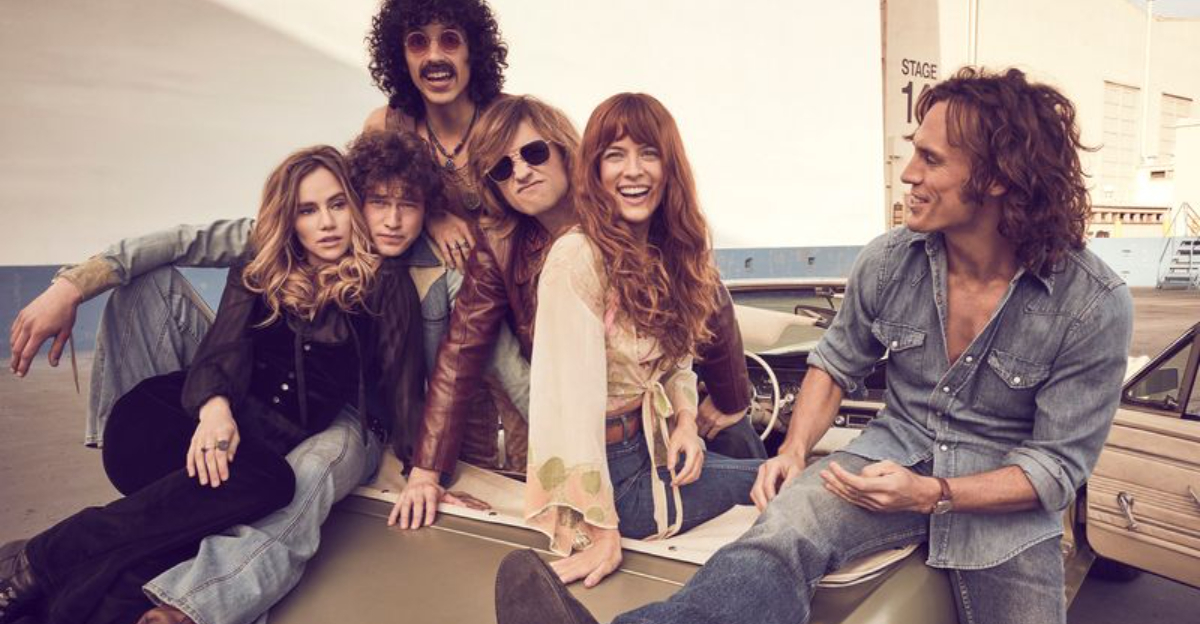
The 1960s and 1970s ignited a raw, electrifying musical revolution—one that didn’t begin in glitzy studios or packed arenas, but in the humble garages of suburban America.
With hand-me-down guitars, crackling amps, and boundless teenage ambition, young musicians transformed those concrete spaces into sonic laboratories. It wasn’t polished, it wasn’t perfect—but man, it was alive. I vividly remember my older brother’s band cranking out power chords in our parents’ garage, the floor trembling, windows rattling, and a crowd of wide-eyed neighborhood kids huddled outside like it was Woodstock.
Every riff felt like rebellion, every drumbeat a declaration of independence. These weren’t just rehearsals—they were raw, unfiltered moments of rock history in the making.
That garage wasn’t just filled with noise; it was bursting with dreams, feedback, and the kind of unshakable energy that turned ordinary teens into legends of their own block.
1. Cramped Quarters, Endless Possibilities

My cousin Tommy’s band squeezed five teenagers and all their gear into his dad’s single-car garage back in ’67. The iconic image of bands practicing in these tight spaces defines the garage rock movement. Instrument cases stacked against oil-stained walls, extension cords snaking across concrete floors, and equipment arranged in a semi-circle became the standard setup.
Bands didn’t need fancy studios – just enough space to set up drums, amps, and a couple microphones. The cramped quarters actually contributed to the raw sound that characterized garage rock. With musicians practically standing on top of each other, the sound became compressed and intense.
Garage walls often got decorated with band posters, album covers, and makeshift sound insulation like egg cartons. Some bands even spray-painted their names or logos directly onto the walls, marking their territory and creating a visual identity that matched their sonic ambitions.
2. DIY Equipment Setups
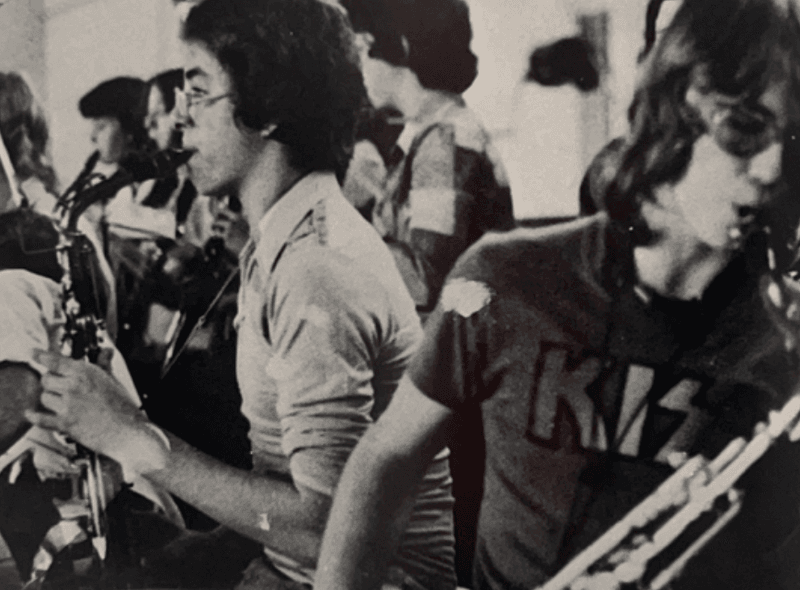
Necessity birthed invention when cash-strapped musicians cobbled together whatever gear they could afford. Those classic snapshots reveal drum kits assembled from different brands, microphones duct-taped to broom handles, and homemade speaker cabinets that looked downright dangerous. My band once used a coffee can with holes punched in it as a makeshift microphone holder!
Guitar players often modified their instruments, adding extra pickups or swapping out hardware to create unique sounds. Keyboards balanced on wooden crates or ironing boards substituted for proper stands. The photographs from this era showcase incredible resourcefulness.
Sound systems typically consisted of whatever amplifiers band members owned, often borrowed from school music departments or cobbled together from radio parts. This DIY approach wasn’t just about saving money – it became part of the aesthetic and ethos of garage rock, giving each band a distinctive sound that couldn’t be replicated.
3. Hair, Clothes, and Attitude
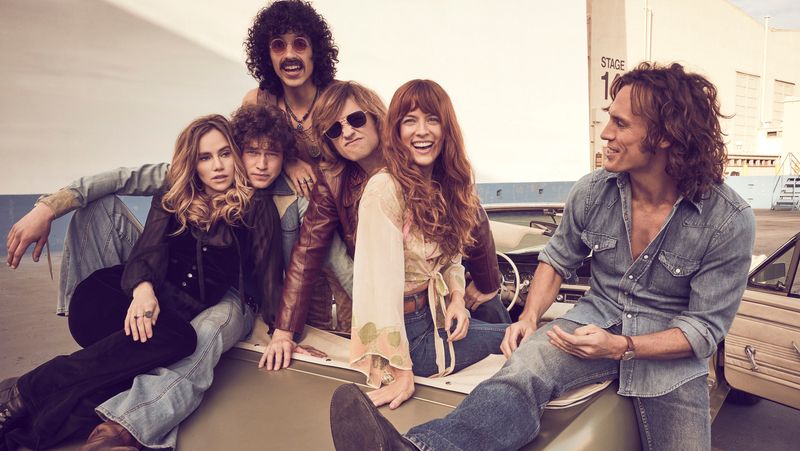
Long locks, bell-bottoms, and defiant expressions captured on Kodak film tell the story better than words ever could. Fashion wasn’t just clothing – it was rebellion incarnate! Band members often coordinated their outfits for performances, sporting matching suits early in the ’60s (mimicking The Beatles) before evolving into the wilder psychedelic styles of the late ’60s and ’70s.
Fringed vests, paisley shirts, headbands, and beaded necklaces became staples as the counterculture movement gained momentum. Girls in bands (though unfortunately rare) pushed boundaries with mini-skirts, go-go boots, and androgynous styling that challenged gender norms.
The expressions caught on film reveal a fascinating mix of teenage bravado and vulnerability. Behind those confident poses and rebellious sneers were kids figuring out their identities through music. Nothing says “we don’t care what the neighbors think” quite like a garage band photo with matching velvet pants and ruffled shirts!
4. Parents: The Reluctant Sponsors
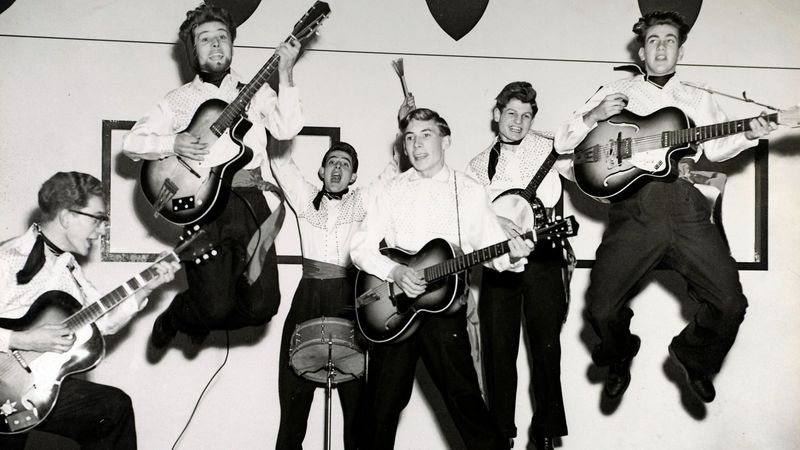
Ah, the classic shot of Mom bringing sandwiches to hungry musicians while Dad stands in the doorway with a pained expression! Parents unwittingly became the first sponsors of rock and roll, providing electricity, space, and grudging tolerance. My father’s standard line was “turn it down or take it elsewhere” – a phrase echoed in garages nationwide.
These photographs capture the generational divide perfectly: middle-aged adults with crew cuts and cardigans juxtaposed against their long-haired offspring cranking out fuzzy renditions of “Louie Louie.” Some parents appeared in photos with expressions ranging from bewildered pride to outright dismay. The more supportive ones might be seen helping move equipment or even attending backyard performances.
Despite the noise complaints and power bill spikes, many parents recognized something important was happening. Those who documented these moments with family cameras preserved not just band history but a pivotal cultural shift taking place right between the station wagon and the lawn mower.
5. The Neighborhood Audience
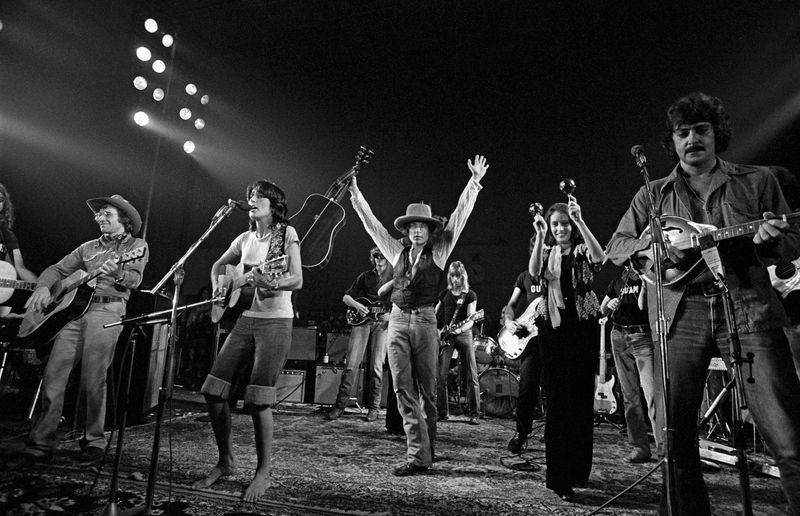
Garage doors raised high revealed makeshift stages to curious onlookers peering in from driveways and sidewalks. The first audiences weren’t in clubs but were neighborhood kids sitting on bicycles, applauding wildly after each song. I still remember Mrs. Abernathy from across the street plugging her ears while simultaneously tapping her foot to our cover of “Paint It Black.”
These impromptu concerts created community moments captured in countless photographs. Kids gathered on lawn chairs, car hoods, and porch steps to witness the spectacle. Younger siblings often appeared at the edges of these photos, wide-eyed and inspired by their older brothers and sisters.
The neighborhood audience played a crucial role in garage band evolution, providing immediate feedback and encouragement. Many bands cite these informal performances as more nerve-wracking than later club gigs. There’s something uniquely vulnerable about playing for people who’ve known you since you rode a tricycle down the same driveway where you’re now attempting to be Jimi Hendrix!
6. Recording Sessions: Captured on Reel-to-Reel
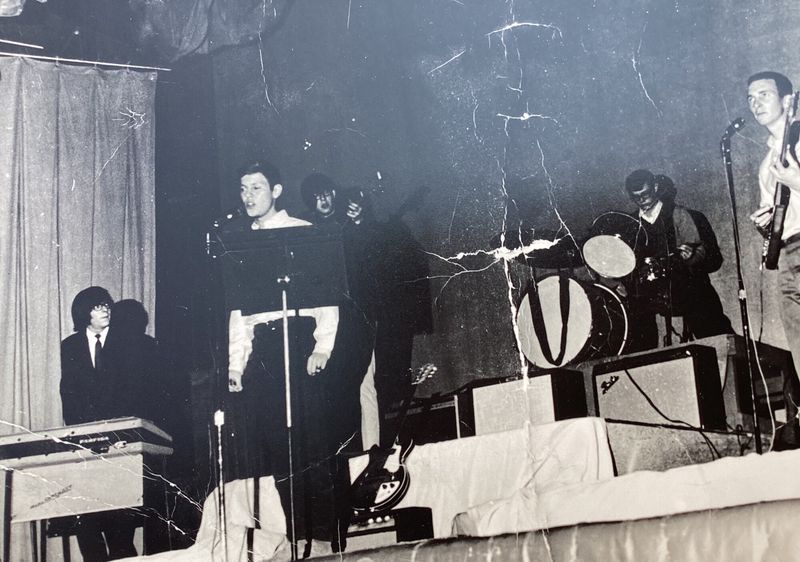
Grainy photos show intense concentration as bands gathered around a single microphone connected to someone’s prized reel-to-reel tape recorder. These primitive recording sessions produced the raw demos that defined the garage sound. My friend’s dad, an audio enthusiast, documented our band’s first recording – five sweaty teenagers hunched around his Wollensak recorder, trying desperately not to make mistakes.
The recording process was far from sophisticated. Bands would typically do single takes with minimal overdubbing capabilities. Photos from these sessions show band members arranged strategically – quieter instruments closer to the microphone, drummers further back – attempting to create some semblance of balance.
The resulting tapes became precious artifacts, copied onto cassettes and passed around schools and neighborhoods. Many garage bands only existed in these amateur recordings and photographs, never making it to vinyl. Yet these captured moments represent the purest expression of garage rock’s DIY ethos: creating something from nothing with whatever tools were available.
7. The Garage as Canvas: Decorating the Space
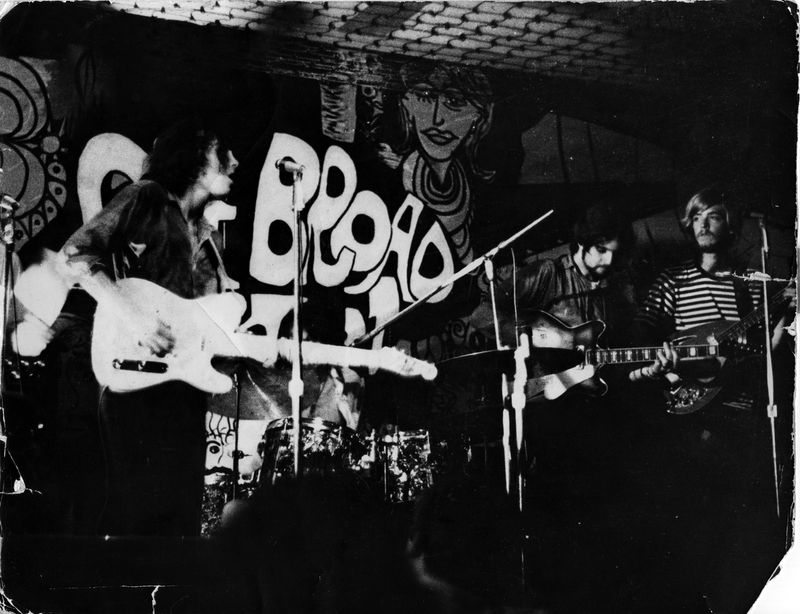
Blank garage walls didn’t stay blank for long once bands claimed them as their territory. Incredible photographs document how these utilitarian spaces transformed into psychedelic wonderlands and personalized shrines to musical heroes. Our drummer’s dad nearly had a coronary when he discovered we’d covered an entire wall with album covers and magazine cutouts glued directly to the drywall!
Band names emblazoned on bedsheets created instant backdrops for photos. Christmas lights strung across rafters added ambiance year-round. Posters of The Beatles, The Stones, and Hendrix watched over practice sessions like patron saints of garage rock.
The most dedicated bands painted murals directly on walls – psychedelic swirls, band logos, or recreations of favorite album covers. These personalized spaces became extensions of the band’s identity and visual aesthetic. Looking at photographs now, you can almost smell the mixture of paint fumes, cigarette smoke, and teenage ambition that permeated these transformed spaces.
8. The First Gig: Beyond the Garage
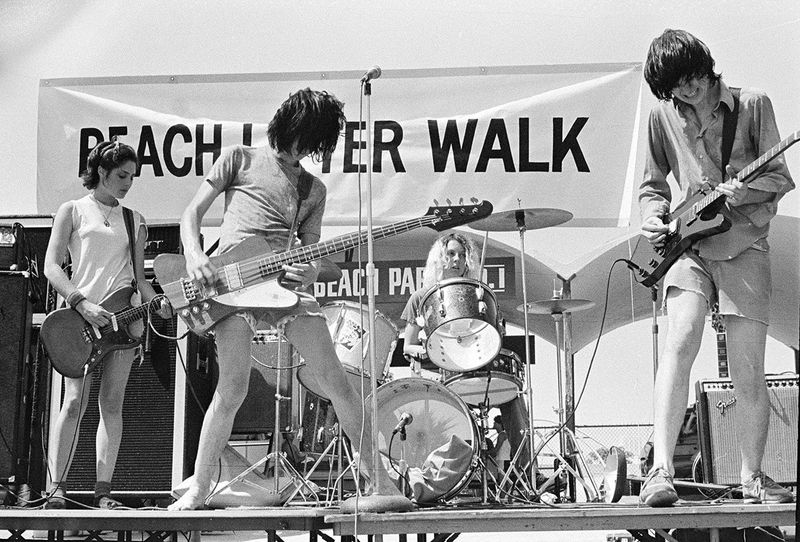
Nothing captures the wide-eyed excitement and absolute terror like photos of garage bands playing their first real gigs. School gymnasiums, church basements, and community centers became hallowed ground for these milestone performances. The stage fright is palpable in these images – knuckles white on guitar necks, foreheads glistening under harsh lighting.
Local photographers documented these events with the same reverence as professional rock shows. You can trace a band’s evolution through these photos – from tentative first performances to more confident stage presence. My sister snapped a photo of my first real gig at the VFW hall; I’m visibly counting beats with my mouth, terrified of messing up.
Equipment malfunctions were common and often captured on film – singers sharing microphones after one cut out, guitarists kneeling to adjust temperamental amplifiers mid-song. These authentic moments of problem-solving reveal the resourcefulness required to survive outside the garage. The audience’s reactions in these photos tell the real story – teenagers dancing awkwardly or watching with critical intensity, deciding if this band was worth following.
9. The Van: Mobile Headquarters
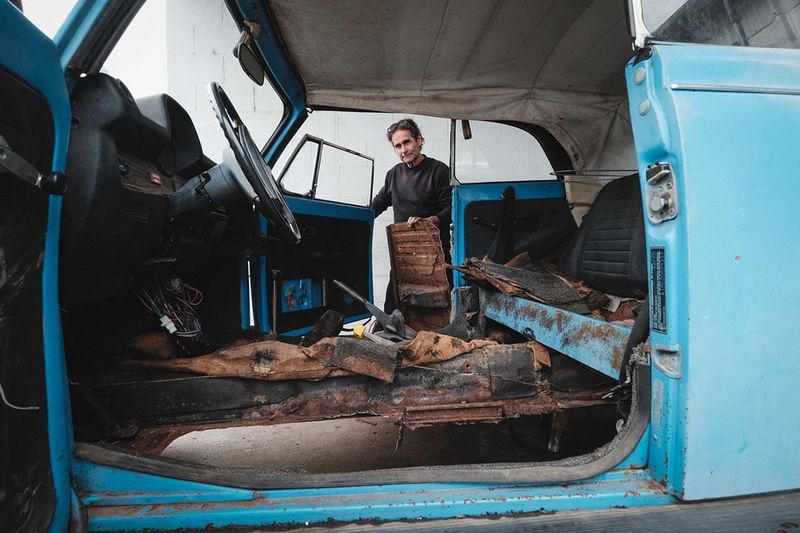
For bands lucky enough to secure gigs beyond walking distance, the band van became a sacred vessel and mobile headquarters. Classic photos show proud musicians with their vehicular pride and joy – typically a well-worn VW bus or painter’s van with band name hand-painted on the side. Our keyboardist’s mom lent us her station wagon, which we promptly decorated with cardboard signs for our first out-of-town show.
These vans represented freedom and legitimacy. Interior shots reveal equipment tetris – how to fit drums, amplifiers, guitars, and gangly teenagers into minimal space. Many bands removed seats to accommodate gear, creating uncomfortable but necessary transportation arrangements.
The exteriors often received as much creative attention as garage walls, with psychedelic paint jobs, band logos, and cosmic imagery transforming ordinary vehicles into rolling advertisements. These decorated vans parked outside venues signaled to passersby that something exciting was happening inside. For many garage bands, the acquisition of a dedicated vehicle marked the transition from hobby to serious pursuit – even if that pursuit never led beyond the next town over.
10. Handmade Promotional Materials
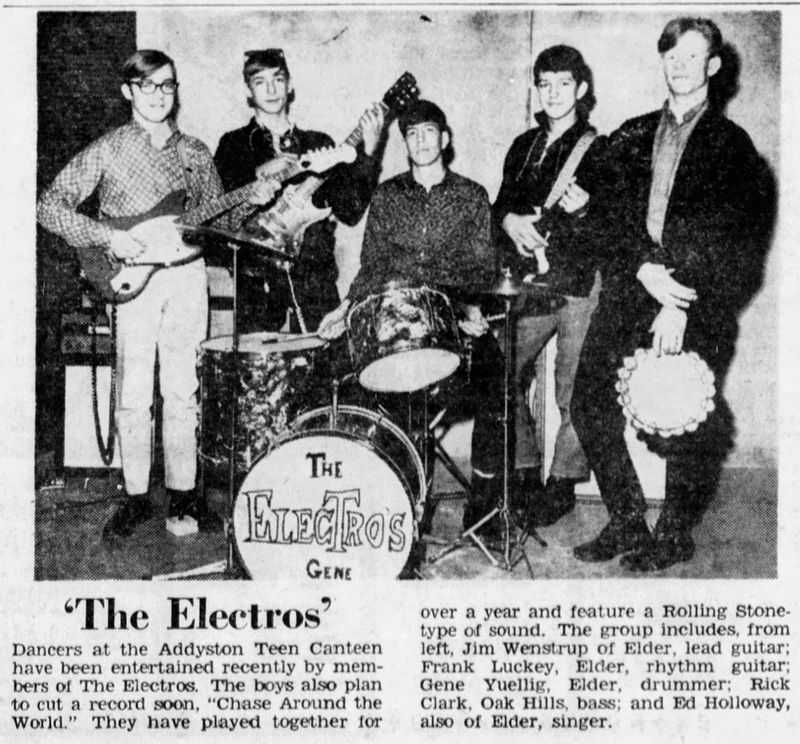
Before Photoshop, there were scissors, glue, and photocopiers. Photographs of garage bands often included their DIY promotional materials – hand-drawn concert flyers, mimeographed band bios, and album artwork sketched during math class. My girlfriend designed our first poster using magazine letters cut out and pasted onto construction paper – pure punk aesthetic before punk was even a thing!
Band photos themselves became promotional tools, carefully staged to project the desired image. Groups posed with instruments in formation, attempting serious expressions that often resulted in unintentionally hilarious snapshots. These photos would be reproduced on flyers or included in press kits sent to local venues.
The most ambitious bands created their own logos, developing distinct visual identities that appeared on drum heads, hand-screened t-shirts, and album covers. Looking at these materials now reveals incredible creativity within severe technical limitations. Today’s bands with digital design tools can’t replicate the charm of slightly crooked lettering on a hand-cut concert flyer or the imperfect beauty of concert posters run through overworked copy machines at someone’s parent’s office after hours.
11. The Female Pioneers
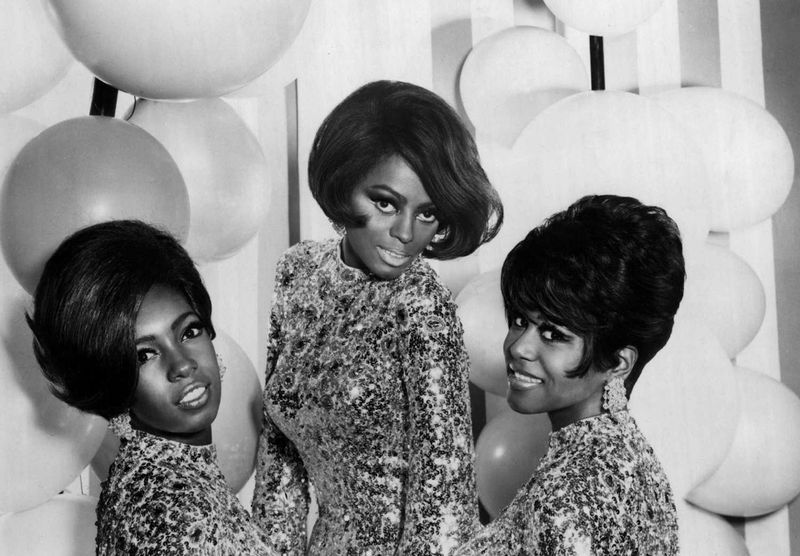
Rarer than gold – photographs of all-girl garage bands from this era showcase the true pioneers who kicked down doors for future generations of women in rock. These images capture determined young women defying expectations, often facing ridicule and resistance that their male counterparts never experienced. The Shaggs, The Pleasure Seekers (featuring a young Suzi Quatro), and Goldie & The Gingerbreads blazed trails with electric guitars and uncompromising attitudes.
Their fashion choices spoke volumes – rejecting “proper” feminine attire for androgynous styles or creating their own glamorous interpretations of rock fashion. Many photos show these women looking directly into the camera with unmistakable confidence, silently challenging viewers’ preconceptions about who could play rock music.
Equipment companies didn’t design instruments with women in mind, making these images even more remarkable. Photos show creative adaptations – guitar straps modified to fit smaller frames, drum kits rearranged for different proportions. These historical documents prove that garage rock wasn’t exclusively a boys’ club, despite what mainstream rock histories might suggest.
12. The Basement Alternative
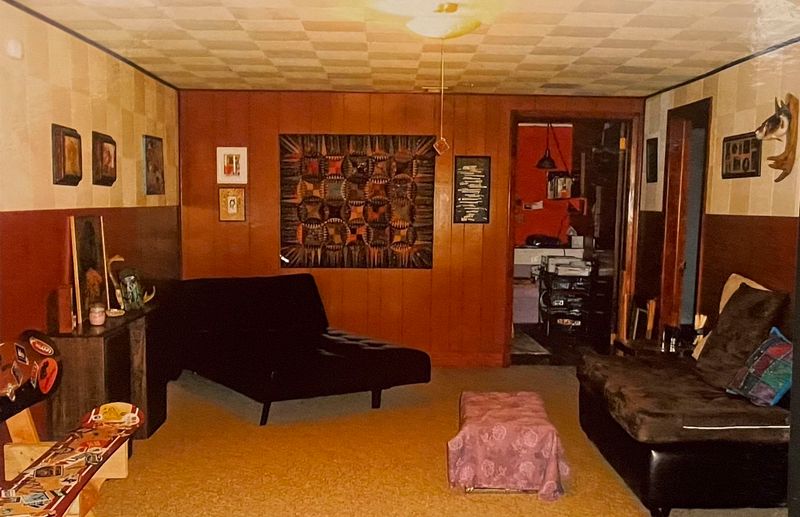
Not every band claimed garage territory – basement bands created their own underground scene, literally! These subterranean studios offered better temperature control but worse ventilation, creating the perfect sweaty conditions for rock rebellion. My first band practiced in Mike’s wood-paneled basement, surrounded by his dad’s hunting trophies that seemed to judge our every power chord.
Photos from basement bands reveal distinct aesthetics – wood paneling, drop ceilings, and concrete floors created different acoustics and vibes from their garage counterparts. Bands often hung blankets on walls in amateur sound-dampening efforts, creating cave-like environments captured in flash photography.
Height was always an issue, with taller band members dodging ceiling joists and light fixtures during particularly enthusiastic performances. These challenges appear in numerous photos – drummers hunched under stairwells, guitarists careful not to bang headstocks on low ceilings. Despite the constraints, basement bands developed their own mystique, with the journey down narrow stairs adding to the sense that something special and secret was happening below the family living room.
13. Battle of the Bands: Competitive Spirit
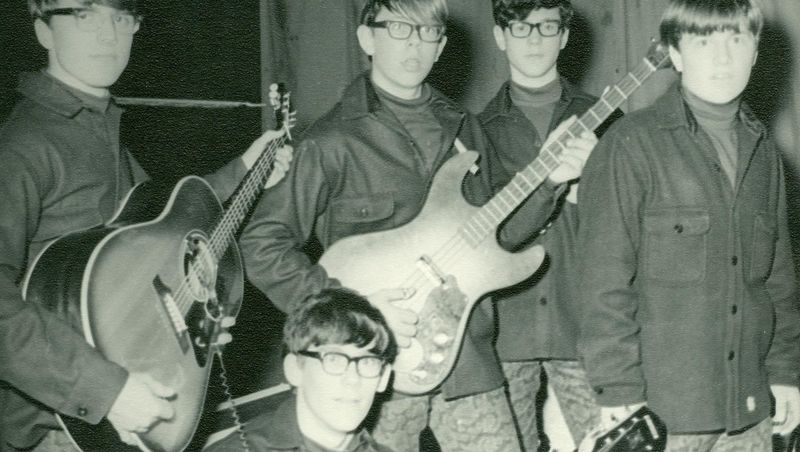
Local competitions brought garage bands out of isolation and into direct combat, creating photographic gold as rivals sized each other up backstage and gave their all under school auditorium lights. These battle of the bands events were the American Idol of their day, complete with nervous breakdowns, equipment failures, and occasional glory. My band once lost to a group that played “In-A-Gadda-Da-Vida” complete with a 10-minute drum solo – the audience ate it up while we fumed backstage!
Photographers captured the full emotional spectrum at these events – the concentration during performances, the tension during judges’ deliberations, and the unfiltered reactions when winners were announced. Group photos of all competing bands reveal fascinating contrasts in style and attitude between different garage groups from the same town.
These competitions often provided the first experience with professional-quality sound systems and stage lighting, elevating bands beyond their garage origins. Trophy presentations became immortalized moments – awkward teenagers suddenly thrust into spotlight glory, holding modest prizes that represented massive validation of their musical dreams.
14. The Instrument Upgrade Moment
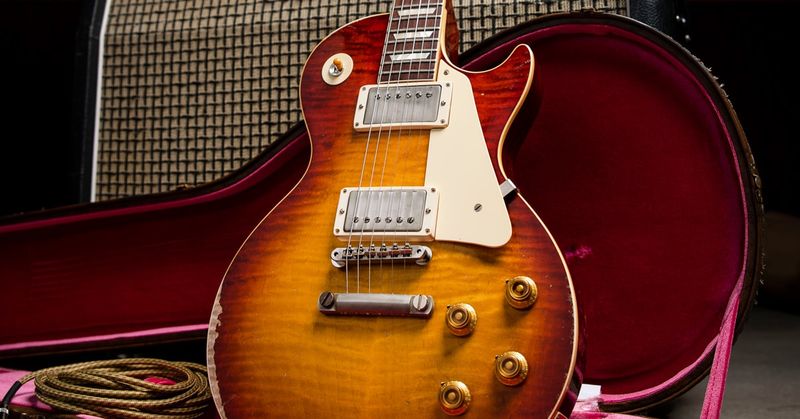
Few photos capture pure joy like the moment a garage musician acquired better gear. That magical transition from pawn shop starter guitar to something professional-grade created milestone moments worthy of documentation. I’ll never forget when our lead guitarist got his first Gibson SG – we spent an entire afternoon just taking pictures of him with it before even plugging it in!
These upgrade photos tell stories of paper routes, summer jobs, and saved allowances. The pride is unmistakable as teenagers posed with new drum kits, proper amplifiers, or name-brand guitars. Parents often appeared in these shots too, sometimes handing over the instrument as a birthday or Christmas gift – investments in their children’s passion that transcended the usual parent-teen tensions.
Equipment evolution can be traced through band photos over time – starting with mismatched, entry-level instruments and gradually progressing to more professional setups. These images capture more than acquisition; they document pivotal moments when young musicians began taking themselves seriously as artists, investing in their craft and identity. The before-and-after equipment photos reveal garage rock’s trajectory from humble beginnings to legitimate cultural force.
15. Capturing the Sound on Film
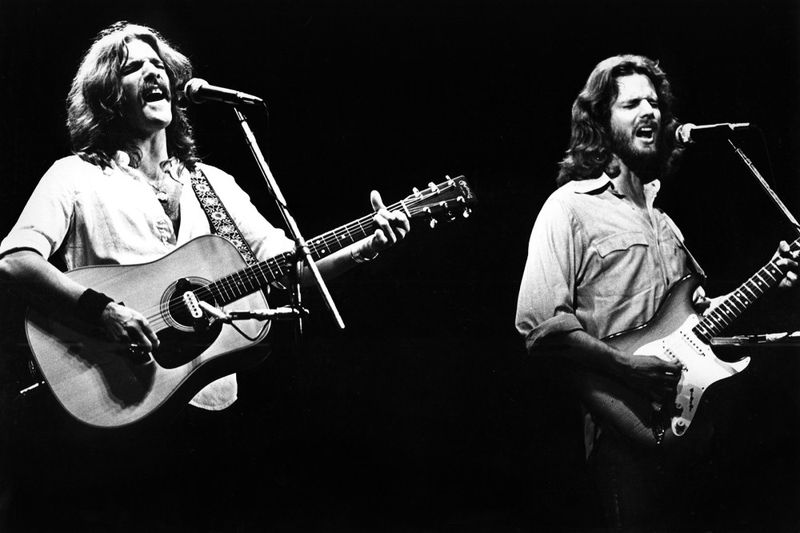
Photographers who documented the garage band phenomenon developed techniques to visually represent sound itself. Motion blur captured thrashing guitarists mid-power chord. Drummers appeared as whirlwinds of flying hair and sticks. These visual techniques translated auditory chaos into still images with remarkable effectiveness.
Close-up shots revealed the physical relationship between musicians and instruments – calloused fingertips pressing guitar strings, sweat droplets flying from drummers’ foreheads, singers’ faces contorted in passionate delivery. The raw physicality of garage rock performance comes through in these intimate details that professional band photos often sanitized away.
Audience reactions in these photos complete the story, showing the immediate impact of the sound being created. Expressions of surprise, joy, and sometimes confusion registered the visceral power of garage rock’s primitive energy. The best photographers captured that magical feedback loop between performer and audience – the moment when a chord struck in a suburban garage somehow translated into transcendent connection. These images preserve not just how garage bands looked, but how they felt to experience in person.
